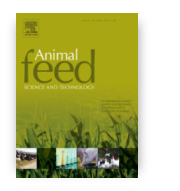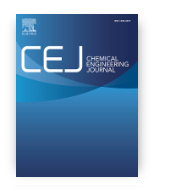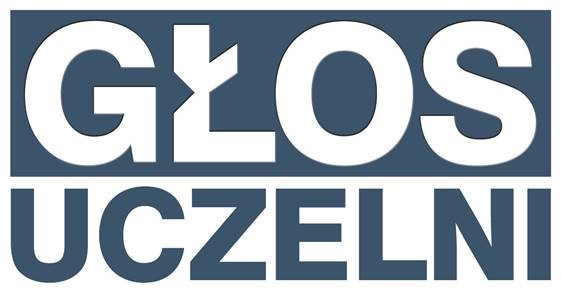
Research papers of the month – August 2024
We present the highest-score research papers of August 2024. These papers have ben published in journals with the highest Ministerial score – 200 points.
An innovative spray method to enrich feed mixture for hens with micronutrients
Aleksandra Gersz; Damian Konkol; Dawid Skrzypczak; Katarzyna Mikuła; Grzegorz Izydorczyk; Rafał Taf; Ewa Popiela; Sebastian Opaliński; Wojciech Ludwig; Katarzyna Chojnacka; Mariusz Korczyński; Anna Witek-Krowiak
Animal Feed Science and Technology
Ministerial score = 200.0
Journal Impact Factor (2023) = 2.5 (Q1)
A modern approach to animal nutrition involves the use of sustainable and environmentally safe solutions with maximum efficiency and the provision of all required nutrients. It is necessary to search for new methods of animal feed formulation and enrichment to meet these requirements. This paper presents an innovative spray biosorption method fortification of feeds for laying hens with valuable micronutrients (Cu, Mn, Zn, and Fe). The study aimed to evaluate the effectiveness of the method in vitro (extraction in water and ammonium citrate) and in vivo tests on laying hens. Experiments were conducted on a laboratory scale (up to 1 kg of feed was enriched), semi-technical scales (up to 1000 kg of feed was enriched), and the possibility of enriching feed in a spouted bed column was also investigated to test this method for an industrial scale. The influence of process conditions on biosorption efficiency (total concentration of micronutrients in solution 5000–15,000 g/L, the low rate of enrichment liquid 3.33·10–8 to 1.33·10–7 m3/s, material spraying time 68–720 s) was also investigated. A group of 108 Lohmann Brown laying hens was randomly divided into six experimental groups (including a control group). Each group of hens was fed a compound feed in which all or part of their micronutrient requirements were replaced with material enriched by the innovative method for 90 days. Egg characteristics, sensory evaluation, and micronutrient content were analysed, and in most cases, better results were obtained than with feeds enriched by standard methods. High-quality eggs were obtained, and egg production reached 95–96 %. The amount of micronutrients in the egg content was higher than the standard value for conventional farming for all research groups. A significant improvement in eggshell quality was also observed. The results are promising, and micronutrient-enriched eggs can be functional foods with higher micronutrient content.
DOI:10.1016/j.anifeedsci.2024.116055
Adsorption of antibiotics from aqueous media using nanocomposites: Insight into the current status and future perspectives
Christopher Chiedozie Obi; Matthew Ndubuisi Abonyi; Paschal Enyinnaya Ohale; Chijioke Elijah Onu; Joseph Tagbo Nwabanne; Chinenye Igwegbe; Toochukwu ThankGod Kamuche; Ikenna H. Ozofor
Chemical Engineering Journal
Ministerial score = 200.0
Journal Impact Factor (2023) = 13.3 (Q1)
The increasing presence of antibiotics in aquatic environments necessitates the development of effective remediation strategies. This review comprehensively explores the potential of nanocomposites for antibiotic adsorption. Nanocomposites demonstrate superior performance in antibiotic removal, attributed to their unique properties arising from the combined advantages of the individual components of the composite. The review discussed the factors influencing the adsorption process, encompassing characteristics of both antibiotics and nanocomposites. Mechanisms, kinetics, and equilibrium isotherms were meticulously examined to elucidate the fundamental principles governing antibiotic adsorption. The review identified the dominant mechanisms of the process to be hydrogen bonding, π-π interactions, and electrostatic interactions. Notably, pseudo-second-order and Langmuir models were the most prevalent fit for adsorption kinetics and isotherms, respectively. The importance of thermodynamics in assessing process feasibility was emphasized, with reported data suggesting the spontaneous and exothermic nature of most adsorption processes. Additionally, the review explores the application of computer-aided modeling for optimizing adsorption efficiency. Finally, significant knowledge gaps were identified, and future research directions were highlighted. Ultimately, the adsorption of antibiotics by nanocomposites shows great promise, providing a long-term and practical solution to antibiotics contamination in aqueous environments. However, for nanocomposites to fully realize their potential in addressing the escalating problem of antibiotic contamination, more research and development in this field are essential.
DOI:10.1016/j.cej.2024.154767

 A modern approach to animal nutrition involves the use of sustainable and environmentally safe solutions with maximum efficiency and the provision of all required nutrients. It is necessary to search for new methods of animal feed formulation and enrichment to meet these requirements. This paper presents an innovative spray biosorption method fortification of feeds for laying hens with valuable micronutrients (Cu, Mn, Zn, and Fe). The study aimed to evaluate the effectiveness of the method in vitro (extraction in water and ammonium citrate) and in vivo tests on laying hens. Experiments were conducted on a laboratory scale (up to 1 kg of feed was enriched), semi-technical scales (up to 1000 kg of feed was enriched), and the possibility of enriching feed in a spouted bed column was also investigated to test this method for an industrial scale. The influence of process conditions on biosorption efficiency (total concentration of micronutrients in solution 5000–15,000 g/L, the low rate of enrichment liquid 3.33·10–8 to 1.33·10–7 m3/s, material spraying time 68–720 s) was also investigated. A group of 108 Lohmann Brown laying hens was randomly divided into six experimental groups (including a control group). Each group of hens was fed a compound feed in which all or part of their micronutrient requirements were replaced with material enriched by the innovative method for 90 days. Egg characteristics, sensory evaluation, and micronutrient content were analysed, and in most cases, better results were obtained than with feeds enriched by standard methods. High-quality eggs were obtained, and egg production reached 95–96 %. The amount of micronutrients in the egg content was higher than the standard value for conventional farming for all research groups. A significant improvement in eggshell quality was also observed. The results are promising, and micronutrient-enriched eggs can be functional foods with higher micronutrient content.
A modern approach to animal nutrition involves the use of sustainable and environmentally safe solutions with maximum efficiency and the provision of all required nutrients. It is necessary to search for new methods of animal feed formulation and enrichment to meet these requirements. This paper presents an innovative spray biosorption method fortification of feeds for laying hens with valuable micronutrients (Cu, Mn, Zn, and Fe). The study aimed to evaluate the effectiveness of the method in vitro (extraction in water and ammonium citrate) and in vivo tests on laying hens. Experiments were conducted on a laboratory scale (up to 1 kg of feed was enriched), semi-technical scales (up to 1000 kg of feed was enriched), and the possibility of enriching feed in a spouted bed column was also investigated to test this method for an industrial scale. The influence of process conditions on biosorption efficiency (total concentration of micronutrients in solution 5000–15,000 g/L, the low rate of enrichment liquid 3.33·10–8 to 1.33·10–7 m3/s, material spraying time 68–720 s) was also investigated. A group of 108 Lohmann Brown laying hens was randomly divided into six experimental groups (including a control group). Each group of hens was fed a compound feed in which all or part of their micronutrient requirements were replaced with material enriched by the innovative method for 90 days. Egg characteristics, sensory evaluation, and micronutrient content were analysed, and in most cases, better results were obtained than with feeds enriched by standard methods. High-quality eggs were obtained, and egg production reached 95–96 %. The amount of micronutrients in the egg content was higher than the standard value for conventional farming for all research groups. A significant improvement in eggshell quality was also observed. The results are promising, and micronutrient-enriched eggs can be functional foods with higher micronutrient content. The increasing presence of antibiotics in aquatic environments necessitates the development of effective remediation strategies. This review comprehensively explores the potential of nanocomposites for antibiotic adsorption. Nanocomposites demonstrate superior performance in antibiotic removal, attributed to their unique properties arising from the combined advantages of the individual components of the composite. The review discussed the factors influencing the adsorption process, encompassing characteristics of both antibiotics and nanocomposites. Mechanisms, kinetics, and equilibrium isotherms were meticulously examined to elucidate the fundamental principles governing antibiotic adsorption. The review identified the dominant mechanisms of the process to be hydrogen bonding, π-π interactions, and electrostatic interactions. Notably, pseudo-second-order and Langmuir models were the most prevalent fit for adsorption kinetics and isotherms, respectively. The importance of thermodynamics in assessing process feasibility was emphasized, with reported data suggesting the spontaneous and exothermic nature of most adsorption processes. Additionally, the review explores the application of computer-aided modeling for optimizing adsorption efficiency. Finally, significant knowledge gaps were identified, and future research directions were highlighted. Ultimately, the adsorption of antibiotics by nanocomposites shows great promise, providing a long-term and practical solution to antibiotics contamination in aqueous environments. However, for nanocomposites to fully realize their potential in addressing the escalating problem of antibiotic contamination, more research and development in this field are essential.
The increasing presence of antibiotics in aquatic environments necessitates the development of effective remediation strategies. This review comprehensively explores the potential of nanocomposites for antibiotic adsorption. Nanocomposites demonstrate superior performance in antibiotic removal, attributed to their unique properties arising from the combined advantages of the individual components of the composite. The review discussed the factors influencing the adsorption process, encompassing characteristics of both antibiotics and nanocomposites. Mechanisms, kinetics, and equilibrium isotherms were meticulously examined to elucidate the fundamental principles governing antibiotic adsorption. The review identified the dominant mechanisms of the process to be hydrogen bonding, π-π interactions, and electrostatic interactions. Notably, pseudo-second-order and Langmuir models were the most prevalent fit for adsorption kinetics and isotherms, respectively. The importance of thermodynamics in assessing process feasibility was emphasized, with reported data suggesting the spontaneous and exothermic nature of most adsorption processes. Additionally, the review explores the application of computer-aided modeling for optimizing adsorption efficiency. Finally, significant knowledge gaps were identified, and future research directions were highlighted. Ultimately, the adsorption of antibiotics by nanocomposites shows great promise, providing a long-term and practical solution to antibiotics contamination in aqueous environments. However, for nanocomposites to fully realize their potential in addressing the escalating problem of antibiotic contamination, more research and development in this field are essential.








